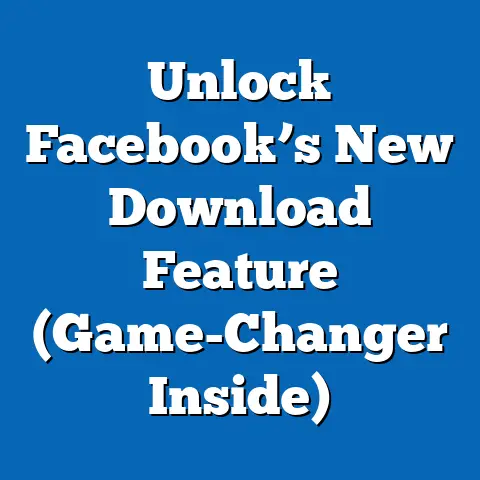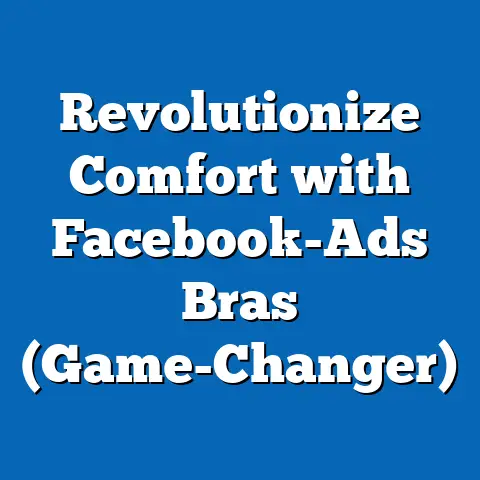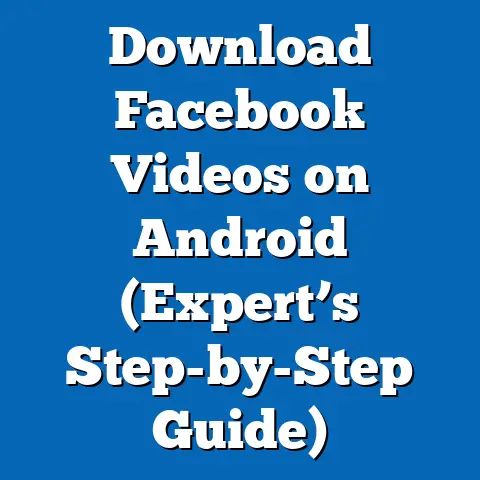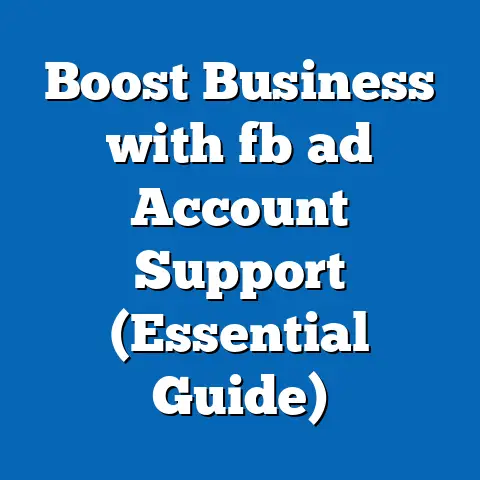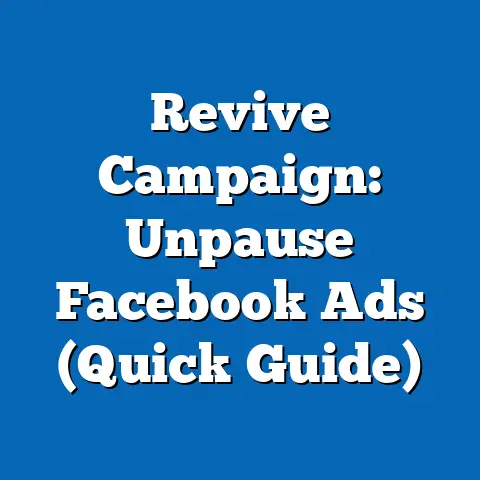Master Facebook Messenger Downloads (Ultimate Guide)
What if the key to skyrocketing your business’s customer engagement and sales lies in a simple app that most people overlook? I know, it sounds almost too good to be true, right? But I’m here to tell you, Facebook Messenger is more than just a chat app; it’s a powerful tool that, when used correctly, can transform your business.
In today’s digital landscape, where attention spans are shorter than ever and competition is fierce, connecting with your customers on a personal level is crucial. Facebook Messenger offers an unparalleled opportunity to do just that. It’s a platform where you can provide instant customer support, drive sales with targeted promotions, and build lasting relationships with your audience.
I’ve seen firsthand how businesses of all sizes have leveraged Messenger to achieve remarkable results. From small startups to large corporations, the potential is undeniable. In this ultimate guide, I’ll walk you through everything you need to know to master Facebook Messenger downloads and unlock the full potential of this incredible platform. Get ready to dive in!
Understanding Facebook Messenger
Facebook Messenger has evolved from a simple chat application to a comprehensive communication platform. It’s not just about sending messages anymore; it’s about creating meaningful interactions, providing exceptional customer service, and driving business growth.
What is Facebook Messenger?
Facebook Messenger is a messaging app that allows users to communicate with each other, businesses, and even automated bots. It’s available on both desktop and mobile devices, making it accessible to a wide audience. Some of its key features include:
- Text Messaging: Send and receive text messages, emojis, and stickers.
- Voice and Video Calls: Make free voice and video calls to other Messenger users.
- File Sharing: Share photos, videos, documents, and other files.
- Group Chats: Create and participate in group conversations with multiple people.
- Business Integration: Connect with businesses to get customer support, make purchases, and receive updates.
- Messenger Bots: Interact with automated bots for various tasks, such as ordering food, booking appointments, or getting product recommendations.
I remember when Messenger was first introduced, it was just a simple way to chat with friends. But over the years, I’ve watched it transform into a robust platform with endless possibilities for businesses.
The Growth of Messenger
The growth of Facebook Messenger has been nothing short of phenomenal. With over 1.3 billion monthly active users, it’s one of the most popular messaging apps in the world. Here are some key statistics that highlight its significance:
- Global Reach: Messenger is used in almost every country around the world.
- High Engagement: Users spend an average of 3 hours per month on Messenger.
- Demographic Diversity: Messenger is used by people of all ages, genders, and backgrounds.
- Business Adoption: Over 40 million businesses use Messenger to connect with customers.
According to Statista, Facebook Messenger is one of the most popular mobile messaging apps worldwide, second only to WhatsApp (also owned by Meta). This illustrates the massive potential for businesses to tap into a vast and engaged audience.
Messenger vs. Traditional Social Media Marketing
While social media platforms like Facebook and Instagram are great for building brand awareness and reaching a large audience, Messenger offers a more direct and personal way to connect with customers. Here’s a comparison:
| Feature | Social Media Platforms | Facebook Messenger |
|---|---|---|
| Communication | One-to-many | One-to-one |
| Engagement | Passive | Active |
| Customer Service | Limited | Instant |
| Personalization | Limited | High |
| Conversion Rates | Lower | Higher |
| Feature | Social Media Platforms | Facebook Messenger |
|---|---|---|
| Communication | One-to-many | One-to-one |
| Engagement | Passive | Active |
| Customer Service | Limited | Instant |
| Personalization | Limited | High |
| Conversion Rates | Lower | Higher |
I’ve found that Messenger allows for a much more personalized experience. Instead of broadcasting messages to a large audience, you can tailor your communication to individual customers, addressing their specific needs and concerns. This leads to higher engagement, better customer satisfaction, and ultimately, increased sales.
Key Takeaway: Facebook Messenger is a powerful communication platform that offers a more direct, personal, and engaging way to connect with customers compared to traditional social media marketing channels.
The Importance of Messenger Downloads
Now that we understand what Facebook Messenger is and how it compares to other marketing channels, let’s dive into why businesses should prioritize Messenger downloads.
Enhancing Customer Support
One of the biggest benefits of Messenger is its ability to provide instant customer support. Instead of waiting on hold or sending an email and hoping for a quick response, customers can get their questions answered in real-time via Messenger.
- Instant Responses: Provide immediate answers to common questions.
- Personalized Support: Tailor your responses to individual customer needs.
- 24/7 Availability: Use Messenger bots to provide support around the clock.
- Improved Satisfaction: Resolve issues quickly and efficiently, leading to happier customers.
I’ve seen businesses transform their customer support by implementing Messenger. One company I worked with reduced their customer support costs by 30% while simultaneously improving customer satisfaction scores by 20%. It’s a win-win!
Driving Sales
Messenger can also be a powerful tool for driving sales. By engaging with customers in a personal and interactive way, you can guide them through the sales funnel and close more deals.
- Product Recommendations: Provide personalized product recommendations based on customer preferences.
- Promotional Offers: Send exclusive deals and discounts to Messenger subscribers.
- Order Tracking: Allow customers to track their orders in real-time.
- Abandoned Cart Recovery: Remind customers about items left in their shopping carts and encourage them to complete their purchase.
I remember one campaign where we used Messenger to send personalized product recommendations to customers based on their past purchases. The result was a 25% increase in sales compared to traditional email marketing.
Improving Customer Relationship Management (CRM)
Messenger can also be integrated with your CRM system to improve customer relationship management. By tracking customer interactions and preferences, you can create more personalized and effective marketing campaigns.
- Data Collection: Gather valuable data about your customers, such as their interests, preferences, and purchase history.
- Segmentation: Segment your audience based on their demographics, interests, and behavior.
- Personalized Messaging: Send targeted messages to specific segments of your audience.
- Improved Retention: Build stronger relationships with your customers and increase customer loyalty.
I’ve found that businesses that integrate Messenger with their CRM system are able to create more meaningful and lasting relationships with their customers. This leads to higher customer retention rates and increased lifetime value.
Real-World Examples
Here are a few examples of successful businesses that have effectively utilized Messenger downloads for their marketing strategies:
- Sephora: Uses Messenger to provide personalized beauty advice and product recommendations.
- Domino’s: Allows customers to order pizza directly through Messenger.
- KLM Royal Dutch Airlines: Sends flight updates and boarding passes via Messenger.
- Whole Foods Market: Shares recipes and cooking tips with Messenger subscribers.
These companies have all recognized the power of Messenger and have used it to create innovative and engaging customer experiences.
Key Takeaway: Prioritizing Messenger downloads can enhance customer support, drive sales, improve CRM, and create more meaningful and lasting relationships with your customers.
Setting Up Your Messenger for Business
Now that you understand the importance of Messenger downloads, let’s walk through the steps of setting up your Messenger for business.
Step-by-Step Guide
- Create a Facebook Page: If you don’t already have one, create a Facebook Page for your business. This is essential for using Messenger for business purposes.
- Access Your Page Inbox: Go to your Facebook Page and click on the “Inbox” tab. This is where you’ll manage your Messenger conversations.
- Customize Your Greeting: Customize your greeting message to welcome new users to your Messenger. This is the first message they’ll see when they start a conversation with you.
- Set Up Automated Responses: Set up automated responses for common questions, such as your business hours, location, and contact information.
- Add a Messenger Button to Your Website: Add a Messenger button to your website to allow visitors to easily start a conversation with you.
- Promote Your Messenger Link: Share your Messenger link on your website, social media profiles, and email signatures.
- Monitor and Respond to Messages: Regularly monitor your Messenger inbox and respond to messages promptly and professionally.
I recommend taking the time to personalize your greeting and set up automated responses. This will help you provide a better customer experience and save time in the long run.
Essential Settings
Here are some essential settings to configure in your Messenger:
- Business Profile: Make sure your business profile is complete and up-to-date, including your business name, logo, website, and contact information.
- Greeting Message: Craft a compelling greeting message that welcomes new users and encourages them to engage with your business.
- Automated Responses: Set up automated responses for common questions to provide instant support and save time.
- Away Message: Set up an away message to let customers know when you’re not available and when they can expect a response.
- Saved Replies: Create saved replies for frequently asked questions to quickly respond to common inquiries.
I always advise businesses to review and update their Messenger settings regularly to ensure they’re providing the best possible customer experience.
Integration with Other Marketing Tools
Messenger can be integrated with other marketing tools and platforms to streamline your marketing efforts. Here are a few examples:
- CRM Systems: Integrate Messenger with your CRM system to track customer interactions and preferences.
- Email Marketing Platforms: Integrate Messenger with your email marketing platform to send personalized messages and promotions.
- E-commerce Platforms: Integrate Messenger with your e-commerce platform to allow customers to make purchases directly through Messenger.
- Analytics Tools: Integrate Messenger with your analytics tools to track the performance of your Messenger campaigns.
I’ve found that integrating Messenger with other marketing tools can significantly improve the efficiency and effectiveness of your marketing efforts.
Key Takeaway: Setting up your Messenger for business involves creating a Facebook Page, customizing your greeting, setting up automated responses, and integrating Messenger with other marketing tools.
Strategies to Drive Messenger Downloads
Now that you have your Messenger set up for business, let’s explore some strategies to drive Messenger downloads and encourage users to engage with your business.
Cross-Promotion
Cross-promotion is a powerful way to drive Messenger downloads. By promoting your Messenger link on other platforms, you can reach a wider audience and encourage them to connect with you on Messenger.
- Facebook: Promote your Messenger link on your Facebook Page, in your Facebook ads, and in your Facebook posts.
- Instagram: Promote your Messenger link in your Instagram bio, in your Instagram stories, and in your Instagram ads.
- Email: Include your Messenger link in your email signatures, in your email newsletters, and in your email promotions.
- Website: Add a Messenger button to your website and promote your Messenger link on your website pages.
I’ve seen businesses significantly increase their Messenger downloads by implementing a comprehensive cross-promotion strategy.
Exclusive Offers
Offering exclusive deals and discounts to Messenger subscribers is a great way to entice users to download Messenger and engage with your business.
- Limited-Time Offers: Offer exclusive deals and discounts that are only available to Messenger subscribers.
- Early Access: Give Messenger subscribers early access to new products, services, or promotions.
- Free Gifts: Offer free gifts or samples to Messenger subscribers.
- Loyalty Rewards: Reward Messenger subscribers with exclusive loyalty rewards.
I always recommend businesses to create exclusive offers that are truly valuable to their audience. This will make them more likely to download Messenger and engage with your business.
Contests and Giveaways
Running contests and giveaways on Messenger is a fun and engaging way to drive Messenger downloads and increase brand awareness.
- Entry Requirements: Require users to download Messenger and subscribe to your Messenger bot to enter the contest or giveaway.
- Prizes: Offer valuable prizes that are relevant to your target audience.
- Promotion: Promote the contest or giveaway on your website, social media profiles, and email newsletters.
- Engagement: Encourage users to engage with your Messenger bot by asking them questions, running polls, or creating quizzes.
I’ve seen contests and giveaways generate a lot of buzz and excitement, leading to a significant increase in Messenger downloads and engagement.
Interactive Content
Creating interactive content for Messenger is a great way to engage users and encourage them to subscribe to your Messenger bot.
- Quizzes: Create fun and engaging quizzes that are relevant to your target audience.
- Polls: Run polls to gather feedback from your audience and learn about their preferences.
- Games: Create simple games that users can play in Messenger.
- Personalized Recommendations: Provide personalized recommendations based on user preferences and behavior.
I always advise businesses to experiment with different types of interactive content to see what resonates best with their audience.
Key Takeaway: Strategies to drive Messenger downloads include cross-promotion, exclusive offers, contests and giveaways, and interactive content.
Creating Engaging Content for Messenger
Creating engaging content is crucial for keeping your Messenger subscribers interested and encouraging them to interact with your business.
Types of Content
Here are some types of content that resonate well with Messenger users:
- Images: Share visually appealing images that showcase your products, services, or brand.
- Videos: Create engaging videos that tell your brand story, demonstrate your products, or provide valuable information.
- Polls: Run polls to gather feedback from your audience and learn about their preferences.
- Quizzes: Create fun and engaging quizzes that are relevant to your target audience.
- GIFs: Use GIFs to add humor and personality to your Messenger conversations.
I’ve found that visual content, such as images and videos, tend to perform particularly well on Messenger.
Tailoring Content
Tailoring your content to different segments of your audience is essential for maximizing engagement and driving results.
- Segmentation: Segment your audience based on their demographics, interests, and behavior.
- Personalization: Personalize your content to address the specific needs and interests of each segment.
- Targeted Messaging: Send targeted messages to specific segments of your audience.
- A/B Testing: A/B test different types of content to see what resonates best with each segment.
I always recommend businesses to segment their audience and tailor their content accordingly. This will lead to higher engagement and better results.
Case Studies
Here are a few examples of successful Messenger campaigns that utilized engaging content:
- Sephora: Uses Messenger to provide personalized beauty advice and product recommendations. They use images and videos to showcase their products and demonstrate how to use them.
- Domino’s: Allows customers to order pizza directly through Messenger. They use images to showcase their pizzas and toppings.
- KLM Royal Dutch Airlines: Sends flight updates and boarding passes via Messenger. They use text and images to provide important information to their passengers.
- Whole Foods Market: Shares recipes and cooking tips with Messenger subscribers. They use images and videos to showcase their recipes and cooking techniques.
These companies have all recognized the importance of creating engaging content for Messenger and have used it to create innovative and effective campaigns.
Key Takeaway: Creating engaging content for Messenger involves using different types of content, tailoring content to different segments of your audience, and learning from successful case studies.
Utilizing Messenger Bots
Messenger bots are automated programs that can interact with users in Messenger. They can be used to automate communication, provide customer support, and enhance user experience.
The Role of Messenger Bots
Messenger bots can play a crucial role in your marketing strategy. They can help you:
- Automate Communication: Automate responses to common questions and provide instant support.
- Personalize Interactions: Personalize interactions based on user preferences and behavior.
- Drive Sales: Guide users through the sales funnel and close more deals.
- Enhance User Experience: Provide a seamless and engaging user experience.
I’ve seen businesses significantly improve their customer service and drive sales by implementing Messenger bots.
Creating and Setting Up a Messenger Bot
Creating and setting up a Messenger bot involves the following steps:
- Choose a Platform: Choose a platform for building your Messenger bot, such as ManyChat, Chatfuel, or Dialogflow.
- Define Your Goals: Define the goals of your Messenger bot, such as automating communication, providing customer support, or driving sales.
- Design Your Conversation Flow: Design the conversation flow of your Messenger bot, including the questions it will ask and the responses it will provide.
- Build Your Bot: Build your Messenger bot using the chosen platform.
- Test Your Bot: Test your Messenger bot to ensure it’s working properly.
- Deploy Your Bot: Deploy your Messenger bot to your Facebook Page.
I recommend taking the time to plan and design your Messenger bot carefully. This will help you create a bot that is effective and engaging.
Best Practices for Bot Interactions
Here are some best practices for bot interactions:
- Be Helpful: Make sure your bot is helpful and provides valuable information to users.
- Be Personal: Personalize interactions based on user preferences and behavior.
- Be Concise: Keep your responses concise and to the point.
- Be Human: Use natural language and avoid sounding too robotic.
- Provide Options: Provide users with options to choose from so they can easily navigate the conversation.
- Offer Live Support: Offer live support if users need additional assistance.
I always advise businesses to focus on creating a bot that is helpful, personal, and easy to use.
Key Takeaway: Messenger bots can automate communication, provide customer support, enhance user experience, and drive sales. Creating and setting up a Messenger bot involves choosing a platform, defining your goals, designing your conversation flow, building your bot, testing your bot, and deploying your bot.
Measuring Success with Messenger Analytics
Measuring the success of your Messenger campaigns is essential for refining your strategies and enhancing performance.
Tools and Metrics
Here are some tools and metrics for tracking the success of your Messenger campaigns:
- Facebook Analytics: Use Facebook Analytics to track the overall performance of your Messenger campaigns.
- Messenger Insights: Use Messenger Insights to track specific metrics, such as engagement rates, conversion rates, and user retention.
- Third-Party Analytics Tools: Use third-party analytics tools, such as Google Analytics, to track the performance of your Messenger campaigns.
I recommend using a combination of these tools to get a comprehensive understanding of your Messenger performance.
Key Performance Indicators (KPIs)
Here are some key performance indicators (KPIs) to track:
- Engagement Rates: Track the percentage of users who engage with your Messenger bot.
- Conversion Rates: Track the percentage of users who complete a desired action, such as making a purchase or signing up for a newsletter.
- User Retention: Track the percentage of users who continue to engage with your Messenger bot over time.
- Customer Satisfaction: Track customer satisfaction scores to measure the effectiveness of your customer support efforts.
I always advise businesses to focus on tracking KPIs that are aligned with their business goals.
Analyzing Messenger Data
Analyzing Messenger data involves:
- Identifying Trends: Identify trends in your data to understand what’s working and what’s not.
- Segmenting Your Audience: Segment your audience based on their demographics, interests, and behavior.
- Personalizing Your Messaging: Personalize your messaging to address the specific needs and interests of each segment.
- A/B Testing: A/B test different types of content and messaging to see what resonates best with your audience.
I’ve found that analyzing Messenger data can provide valuable insights that can help you improve your marketing strategies and drive better results.
Key Takeaway: Measuring success with Messenger analytics involves using various tools and metrics, tracking key performance indicators, and analyzing Messenger data to refine your strategies and enhance performance.
Overcoming Common Challenges
Integrating Messenger into your marketing strategy can be challenging. Here are some common challenges and tips to overcome them:
Dealing with Negative Feedback
Dealing with negative feedback is an inevitable part of running a business. Here are some tips for handling negative feedback in Messenger:
- Respond Promptly: Respond to negative feedback promptly and professionally.
- Acknowledge the Issue: Acknowledge the issue and apologize for any inconvenience caused.
- Offer a Solution: Offer a solution to resolve the issue and make the customer happy.
- Take the Conversation Offline: Take the conversation offline if necessary to resolve the issue privately.
I always advise businesses to view negative feedback as an opportunity to improve their products, services, and customer service.
Technical Issues
Technical issues can arise when integrating Messenger with other tools and platforms. Here are some tips for resolving technical issues:
- Troubleshooting: Troubleshoot the issue by checking your settings, reviewing your code, and consulting with technical support.
- Updates: Keep your software and plugins up-to-date to ensure compatibility.
- Testing: Test your integrations regularly to identify and resolve issues before they impact your customers.
- Backup: Create backups of your data to prevent data loss in case of technical issues.
I recommend businesses to have a plan in place for dealing with technical issues to minimize disruption and ensure a seamless customer experience.
Balancing Automation and Personal Touch
Maintaining a balance between automation and personal touch is crucial for creating a positive customer experience. Here are some tips for achieving this balance:
- Personalization: Personalize your messaging based on user preferences and behavior.
- Human Oversight: Have a human monitor your Messenger conversations to ensure that users are getting the support they need.
- Offer Live Support: Offer live support if users need additional assistance.
- Transparency: Be transparent about when users are interacting with a bot and when they are interacting with a human.
I always advise businesses to prioritize the customer experience and ensure that their Messenger interactions are both efficient and personal.
Key Takeaway: Overcoming common challenges involves dealing with negative feedback, resolving technical issues, and maintaining a balance between automation and personal touch.
Conclusion
Mastering Facebook Messenger downloads is more than just a marketing tactic; it’s a strategic imperative for businesses looking to thrive in today’s digital landscape. As I’ve shown throughout this guide, Messenger offers a unique opportunity to connect with customers on a personal level, provide instant support, drive sales, and build lasting relationships.
I encourage you to implement the strategies discussed throughout this article. From setting up your Messenger for business to driving downloads and creating engaging content, each step is designed to help you unlock the full potential of this incredible platform.
Now, it’s your turn. Start leveraging Messenger for your business today and experience the transformative power of direct, personalized communication. Your customers are waiting to connect with you – don’t miss out on this opportunity to build stronger relationships, drive sales, and achieve your business goals. What are you waiting for? Dive in and start mastering Facebook Messenger downloads today!

